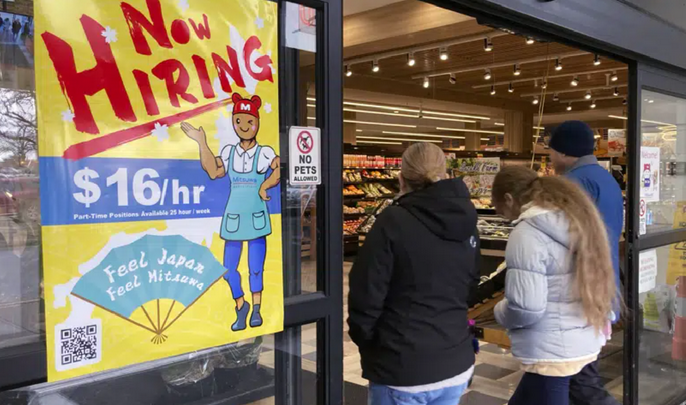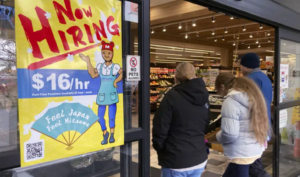311,000 jobs added despite Feds rate hike


In February, employers in the United States added 311,000 jobs, which is a significant number, though lower than the massive gain in January. This development is expected to maintain the Federal Reserve’s sense of urgency to increase interest rates as a measure to counter inflation.
Although more Americans started looking for work, not all of them found jobs, resulting in an increase in the unemployment rate from its 53-year low of 3.4% to 3.6%. According to the latest report released by the government on Friday, the job market across the country is robust, with numerous companies actively seeking new recruits. Federal Reserve Chair, Jerome Powell, indicated during his testimony to Congress this week that the Fed would increase its rate hikes if indicators continued to signal a strong economy and persistent inflation. When the job market is strong, companies usually increase salaries which, in turn, they transfer to their customers through increased prices due to higher labor costs.
In the previous month, the government had reported an unexpected surge in employment with the addition of 517,000 jobs for January. However, in the latest report released on Friday, this number was marginally revised downward to 504,000. The economy appeared to have gained momentum in January as consumers increased their expenditure, and the inflation measure preferred by the Fed also showed an increase.
The significant surge in job growth in February, following the already expansionary gain in January, may prompt the Fed to increase the pace of its rate hikes as a measure against inflation. This usually leads to an increase in interest rates on mortgages, auto loans, credit card borrowing, and business loans when there is a credit tightening by the Fed.
There is uncertainty regarding the decision the Fed will make regarding interest rates during its upcoming meeting later this month. Part of the decision will depend on how Friday’s jobs data is evaluated, as well as the consumer inflation report for February due next week. In the previous month, the government had released a report indicating a rise in January inflation, causing concern as consumer prices had increased once again on a monthly basis.
Early last month, it was reported that job growth in January was robust, indicating the beginning of an accelerating economy. This was the first of a sequence of reports that signified the same. Retail stores and restaurants experienced a surge in sales while inflation, measured by the Fed’s preferred gauge, increased rapidly from December to January, reaching its highest level in seven months.
The latest robust data contradicted a cautiously hopeful storyline that the economy was gradually slowing down, possibly leading to the containment of inflation without causing a significant recession. Currently, the economic forecast is less clear.
The exorbitant borrowing rates have caused a continuous decline in home sales for 12 months, severely impacting the housing market. This is mainly due to the significant increase in the average mortgage rate, which has nearly doubled since then. The manufacturing sector is demonstrating indications of frailty. The increased interest rates have posed a challenge for individuals and businesses in need of loans to purchase significant industrial items such as equipment, vehicles, and household appliances.
On the other hand, there has been no decline in spending for services such as tourism, dining out, and attending entertainment events. Despite the COVID lockdowns, numerous Americans persist in participating in activities that were prohibited.
The hiring in February was three times more than what the Fed would ideally prefer. To avoid an increase in unemployment, it would be necessary to have a monthly job increase of approximately 100,000, which is in line with population growth. If the figure is low, it indicates that employers are not in dire need of workers, and they wouldn’t need to constantly increase wages.
According to Fed officials, the current situation is adding to the rise in inflation, especially in labor-dependent service sectors such as healthcare, hotels, and restaurants.





